Nothing to do with the long-running cartoon family, this Simson was a multi-faceted German company which produced a range of different items, including firearms, automobiles,bicycles and motorbikes and mopeds. The story begins in 1854, when the brothers Löb and Moses Simson buying one third of a steelhammer works in Suhl, Germany. The production of carbon steel began and the firm Simson & Co. was founded in 1856, which produced guns and gun barrels. In 1871 they built their first steam engine and the enterprise established production of bicycles in 1896, which was followed by the start of car production in 1907.

In WWI, Simson produced Mauser Gewehr 98 rifles for the German Army. In the aftermath of the war and the Treaty of Versailles, the reorganised Reichswehr was allowed to buy new handguns from only one company, so as to limit the ability of the German arms industry to recover. Larger German manufacturers were passed over in favour of Simson, precisely because of its lower production capacity, and as such was the sole producer of military-contract Luger pistols from 1925 to 1934; they made about 12,000 Lugers in this period. Simson also was responsible for repairing and refurbishing existing firearms of the Reichswehr, though competitor company DWM was employed in the capacity as well, in contravention of the Treaty of Versailles. In addition to Lugers, Simson also repaired and refurbished Gewehr 98 and Karabiner 98b rifles, MG08 machine guns and MP18 submachine guns.

Simson built cars from 1914 to 1915 and from 1919 until 1934. Its 1914 models had four-cylinder engines and in 1925 Simson introduced its first six-cylinder car, the model J. Car production continued until 1934 and in 1936 Hitler's government forced the Jewish Simson family to flee the country. A trustee took control of the firm, and so by merger with other factories the Berlin Suhler Waffen- und Fahrzeugwerke (BSW) was formed. In the same year the factory produced its first motorcycle, the BSW 98, which had a 98 cc engine and two-speed transmission. Weapons production also increased; from 1939 the company was called Gustloff-Werke-Waffenwerk Suhl, named after assassinated Swiss Nazi Wilhelm Gustloff. As well as the main works in Suhl, the Gustloff-Werke had branch factories at Greiz in Thuringia and at Łódź in Nazi-occupied Poland. Sachs-engined motorcycles from 47 cc to 123 cc were made within the Gustloff group from about 1934 until about 1940. Gustloff-Werke products included 7.92 mm calibre Panzerbüchse 39 anti-tank rifles, 7.92 mm calibre MG 42 machine guns, gun carriages for 20 mm calibre Flak 38 anti-aircraft guns, and various calibres of small arms ammunition. The firm continued to build bicycles, weapons and cars until 1945, production stopping with the end of the war.
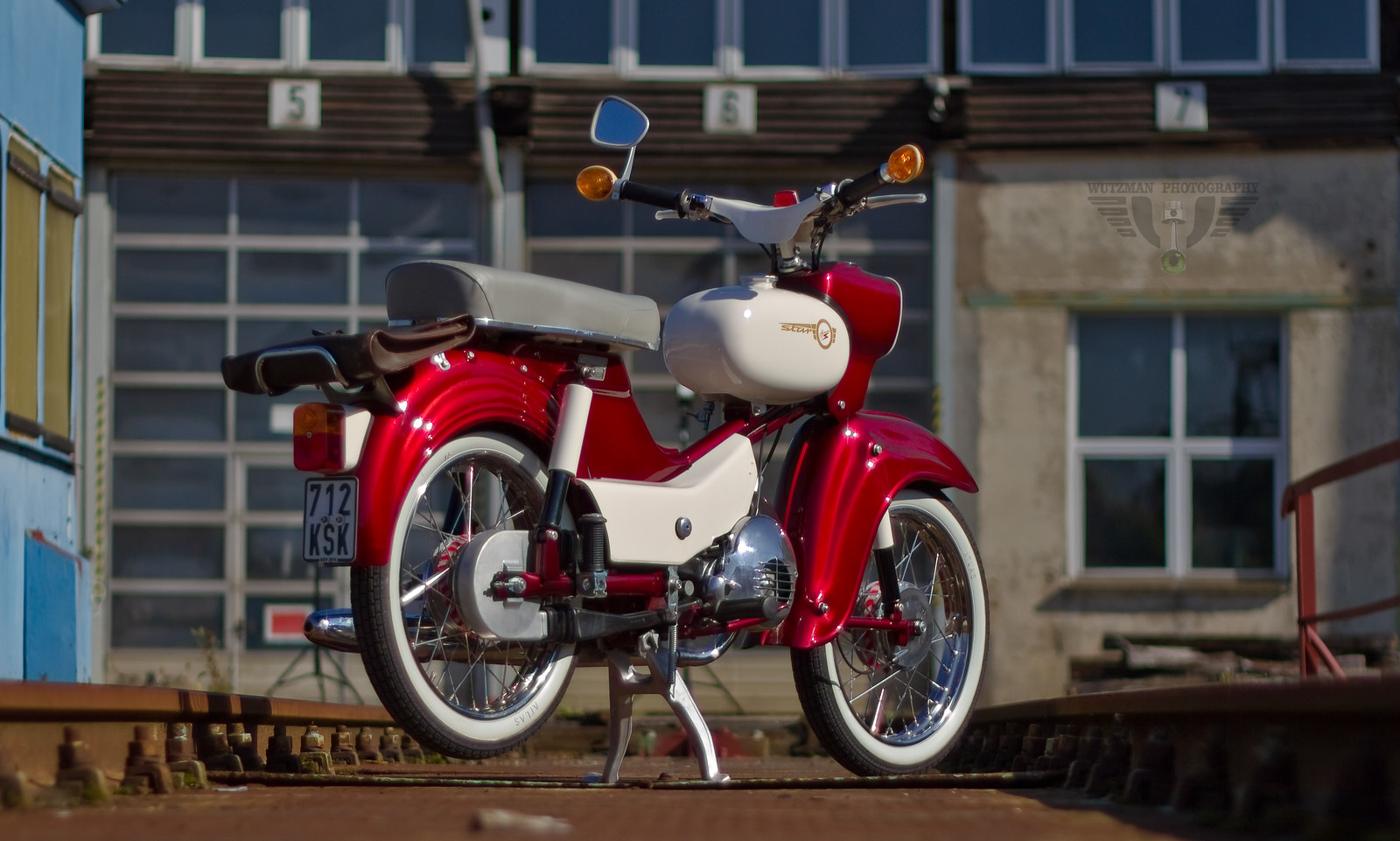
In 1946, by order of the Soviet Military Administration in Germany, the manufacturing plant was partially dismantled and transported to the Soviet Union as part of the Soviet reparations programme for the damage inflicted on the USSR by Germany in WWII. In 1947 the factory was integrated into the Soviet Sowjetische Aktiensgesellschaft Awtowelo company, with all production only for sale in the USSR. In 1949, the Soviets handed control of the factory to the German Democratic Republic (DDR) and in 1952 it was yet again renamed, to Volkseigener Betrieb Fahrzeug- und Gerätewerk Simson Suhl. Production of sporting guns, prams and bicycles slowly resumed, but the main focus was again on making motorcycles.
Between 1949 and 1962 the Suhl factory produced more than 209,000 four-stroke motorcycles; the motorcycles were branded AWO (an abbreviation of Awtowelo) from 1949 until 1955, when the Simson name was revived. Some had Stoye sidecars fitted, and a Stoye Campi luggage trailer could also be specified.
Simson had success with production of four-stroke motorbikes, such as the 425, 425S and 425T, and had success in racing with the likes of the 425R and 425GS.
Production of the plunger-suspension 425 T model ended in 1960, and in 1961 Simson planned a 20bhp, 350 cc, swing-arm model for the general market; however, during the development of this model the DDR introduced a policy of Kapazitätsbündelung ("capacity concentration"), under which the production of larger motorcycles would be concentrated at the MZ works at Zschopau and from January 1962 all new private cars and motorcycles would be two-strokes. The DDR's Volkswirtschaftrat ("People's Economic Council") terminated Simson four-stroke manufacture on 31 December 1961.
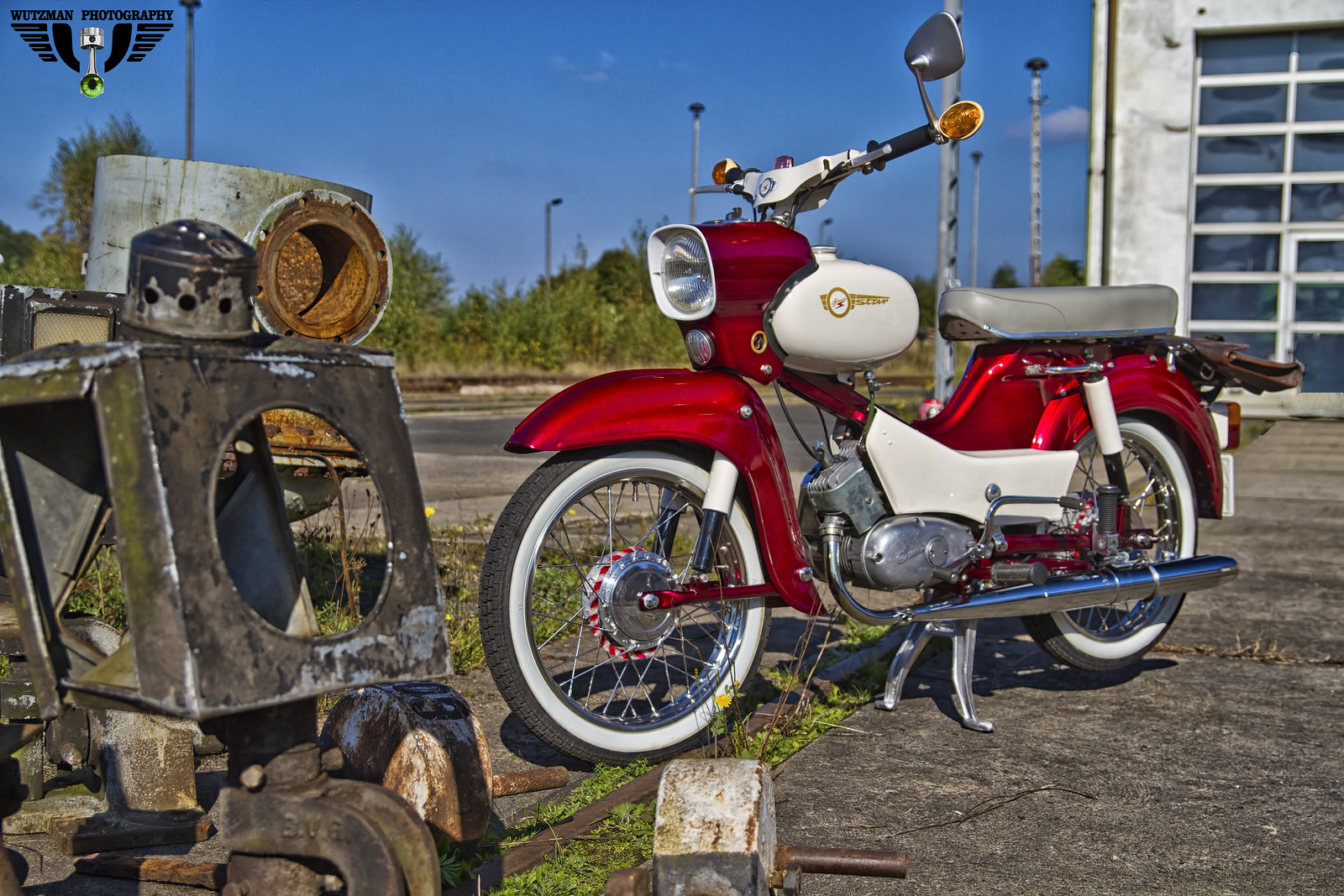
But four-stroke bikes were not Simsons' only two-wheeled product. In 1955, the year that the 425S motorcycle was launched and the Simson brand name restored, the factory also began making two-stroke mopeds. The first model was the SR1, a 48 cc machine producing 1.5bhp; this was succeeded by the SR2 in 1957 and the SR2E in 1959. In 1958 Simson launched the KR50, which has integral legshields and a rear wheel enclosure like a motor scooter, but 16-inch (410 mm) wheels like a small motorcycle. The KR50 had a 48cc motor like the SR-series, but with a higher compression ratio that increased power output to 2.1bhp.

When four-stroke motorcycle production was terminated, the Simson factory was directed to concentrate on moped production. In 1963 it raised the KR50's compression ratio to 8.5:1, which increased power to 2.3bhp. In 1964, this model was succeeded by the KR51 Schwalbe ("swallow"), in which the KR50's 38 x 42mm long-stroke engine was revised with almost square dimensions of 39.5 x 40mm and 50cc displacement. Compression was raised again to 9.5:1, increasing power by almost 50% to 3.4 bhp. Moped production grew steadily in Suhl; up to 200,000 mopeds were built per year.
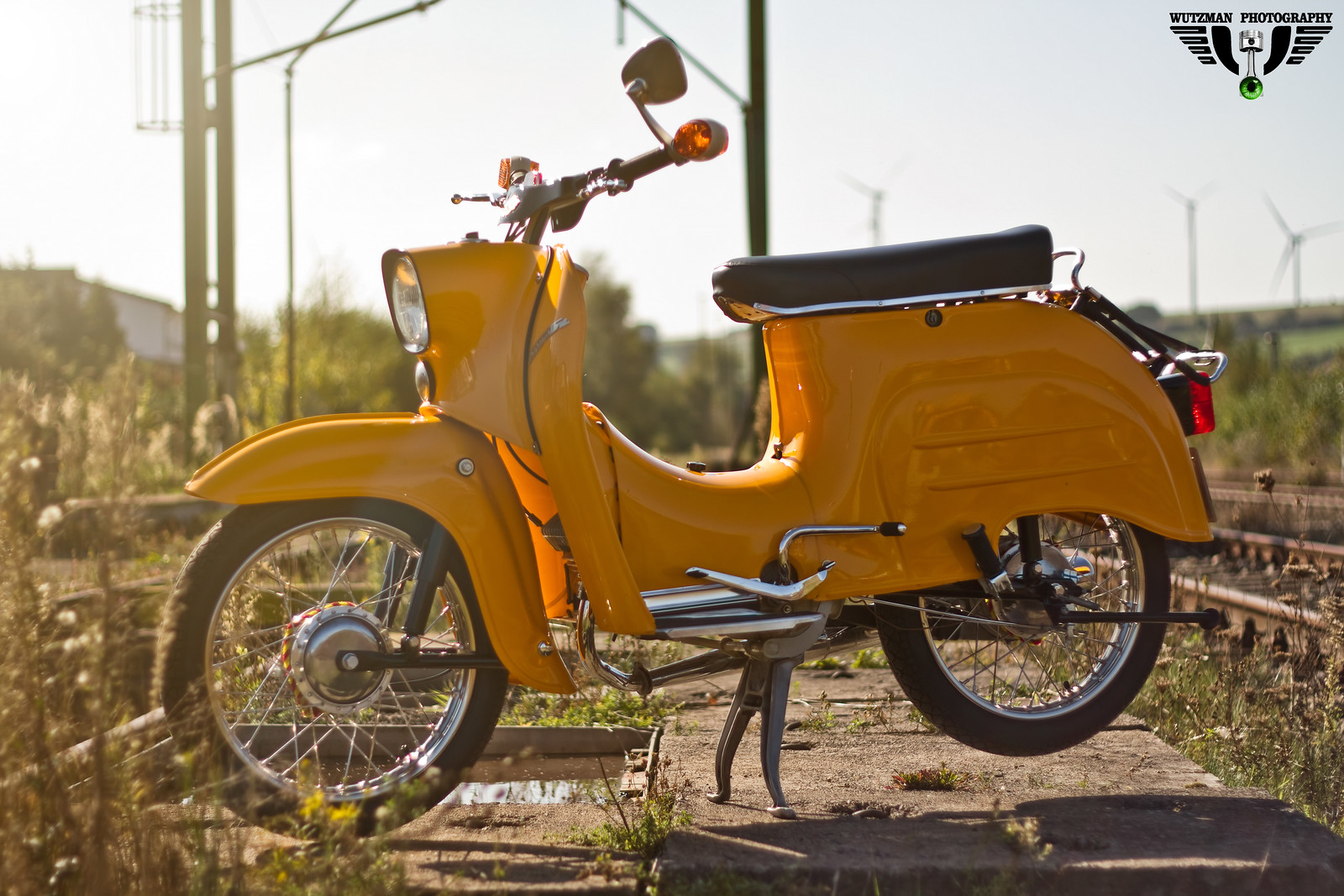
In 1964 Simson launched the SR4-1 Spatz ("sparrow") and SR4-2 Star, each of which had motorcycle-style bodywork without the legshields and rear enclosure. The Spatz initially had the long-stroke 38 x 42mm engine and an 8.5:1 compression ratio and produced 2 bhp; the Star had an oversquare 40 x 39.5 mm engine with 9.5:1 compression and produced 3.4 bhp. In 1967 the Spatz was revised as the SR 4-1 SK, which shared the Star's 40 x 39.5 mm engine dimensions but had an 8.5:1 compression ratio and produced 2.3 bhp.[40] Spatz production was ended in 1970. and Star production was ended in 1975. In 1966 Simson introduced the SR4-3 Sperber ("Sparrowhawk"), with the same 50 cc engine but with power increased to 4.6 bhp and more angular styling than the Spatz and Star and in 1971 Simson introduced the SR4-4 Habicht ("hawk"), which was cosmetically the same as the Habicht but had the same 3.4 bhp power output as the Star. Sperber production was ended in 1972 and Habicht production continued until 1975.
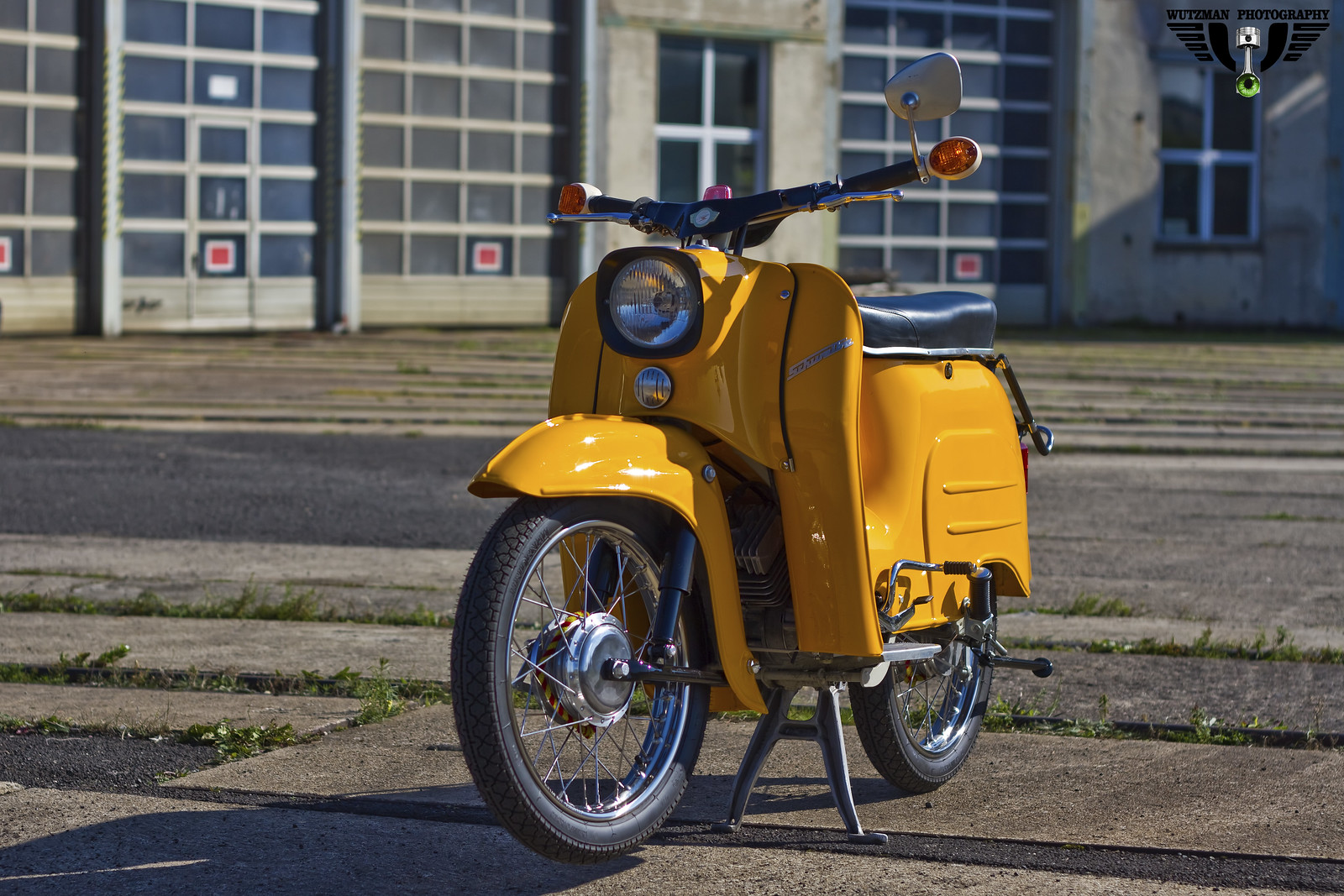
In 1968 Simson was merged with VEB Ernst-Thälmann-Werk Suhl to form the VEB Fahrzeug- und Jagdwaffenwerk Ernst Thälmann Suhl. The Schwalbe helped the company to worldwide fame, and in the DDR the scooter was a symbol for the success of East German two-wheeler motor manufacturing. The Schwalbe was slowly developed over the years; in 1968 the KR 51/1 series was introduced with power increased to 3.6 bhp, followed in 1979 by the KR 51/2 series with 3.7 bhp. Schwalbe production was ended in 1986 in favour of more modern Simson 50cc moped models.

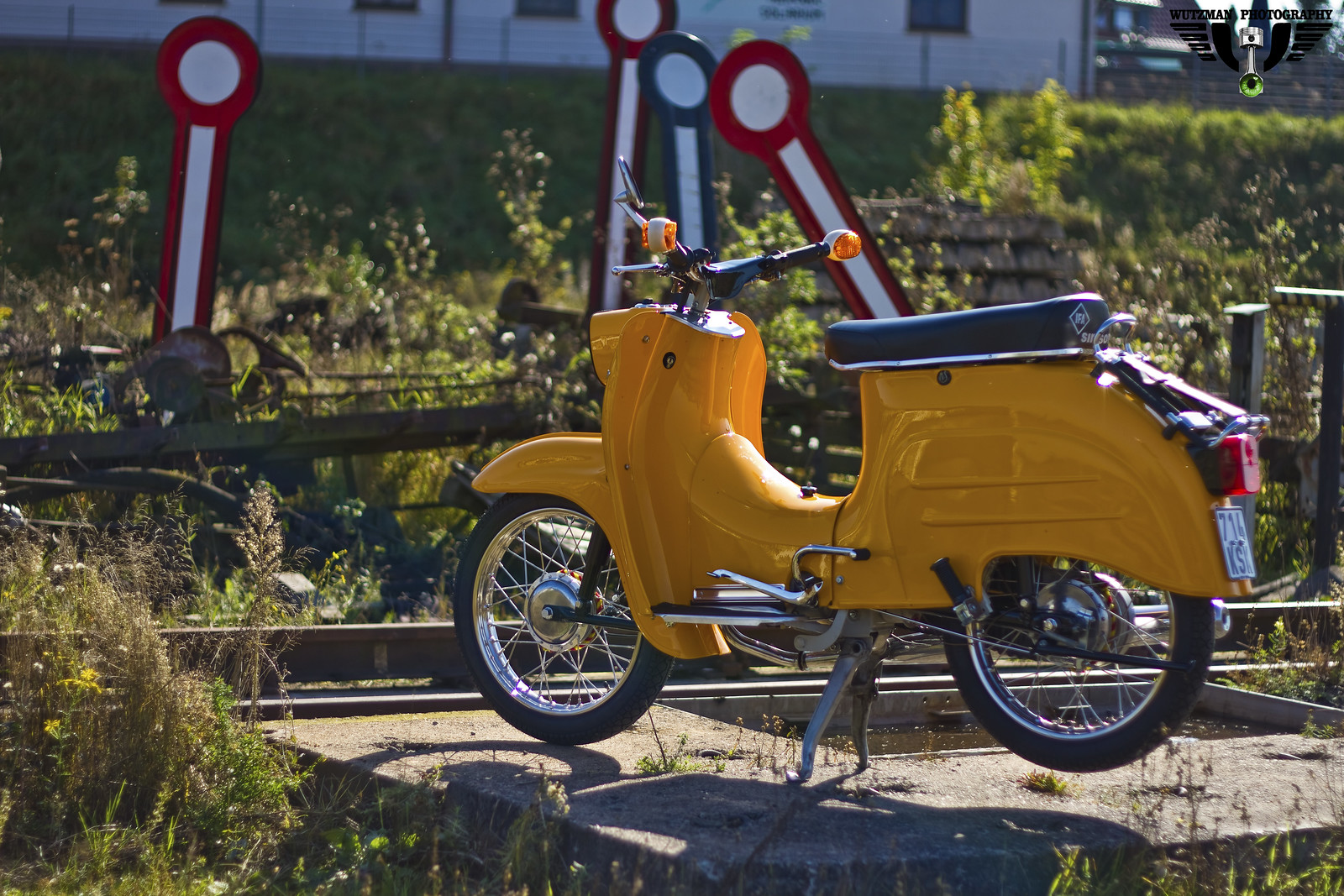
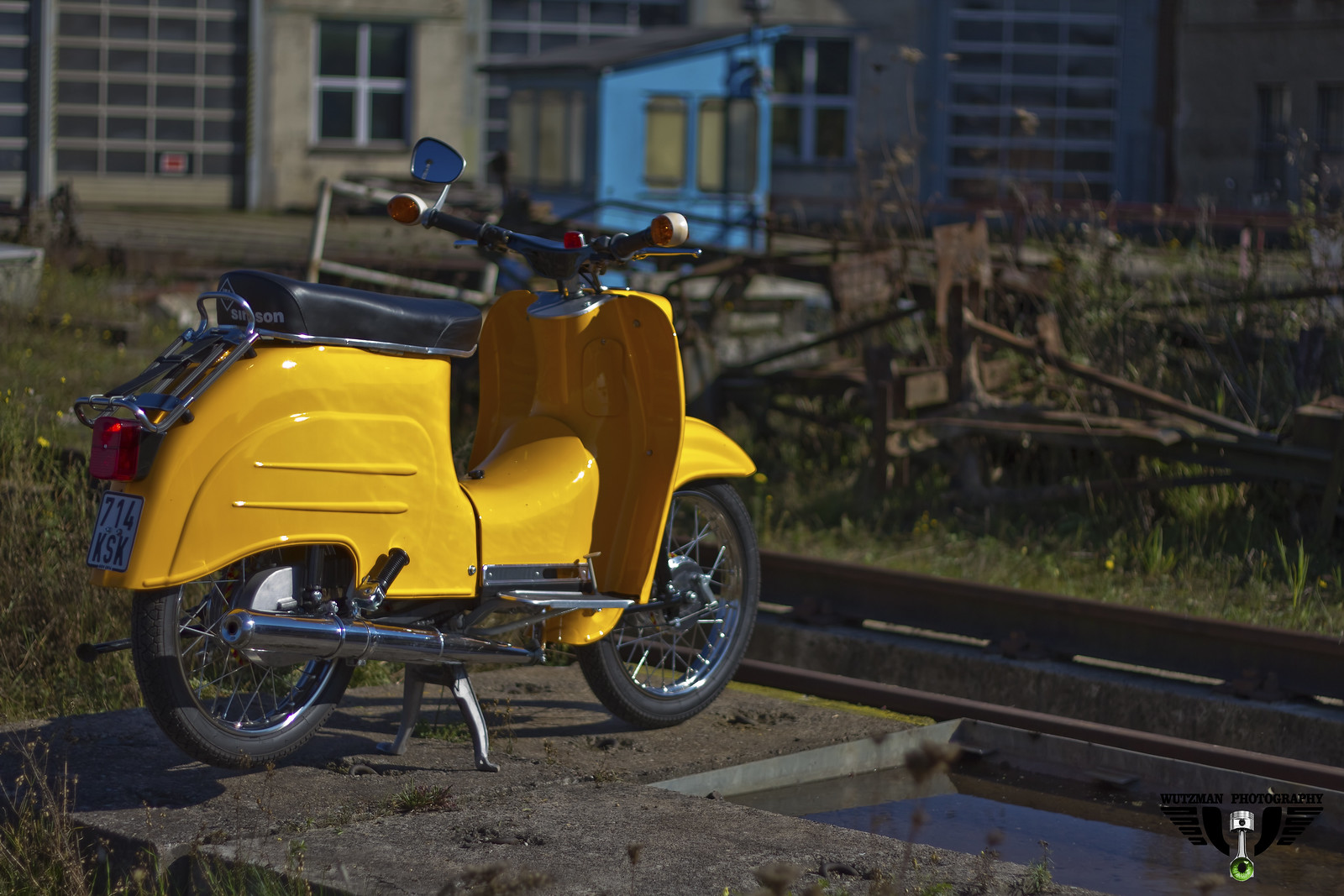
After East Germany's Peaceful Revolution in 1989 and German reunification in 1990, a number of attempts to modernise the assembly lines were made; the company still produced firearms, various models of mopeds and even an electric car called the Hotzenblitz, but like so many former East German companies (such as Trabant and Wartburg), they faced stiff competition from western and Japanese makes; Several investors tried to keep production going and to bring new models to the market, but production finally ceased in autumn 2002 and on February 1, 2003, the company was declared bankrupt.
The two bikes shown here are a 1964-68 Simson Star SR4/2 (the candy red & white moped) and a
1964-86 Schwalbe; its hard to be more specific than that about the exact year, as in typical Eastern Bloc fashion, external styling changed little over their respective production runs, although myriad detail changes were made under the skin. They have gained cult status in Germany and its not hard to see why; they have a simple style that endears the more you look at them. I'd happily give either a place in my garage.
- Amazosan

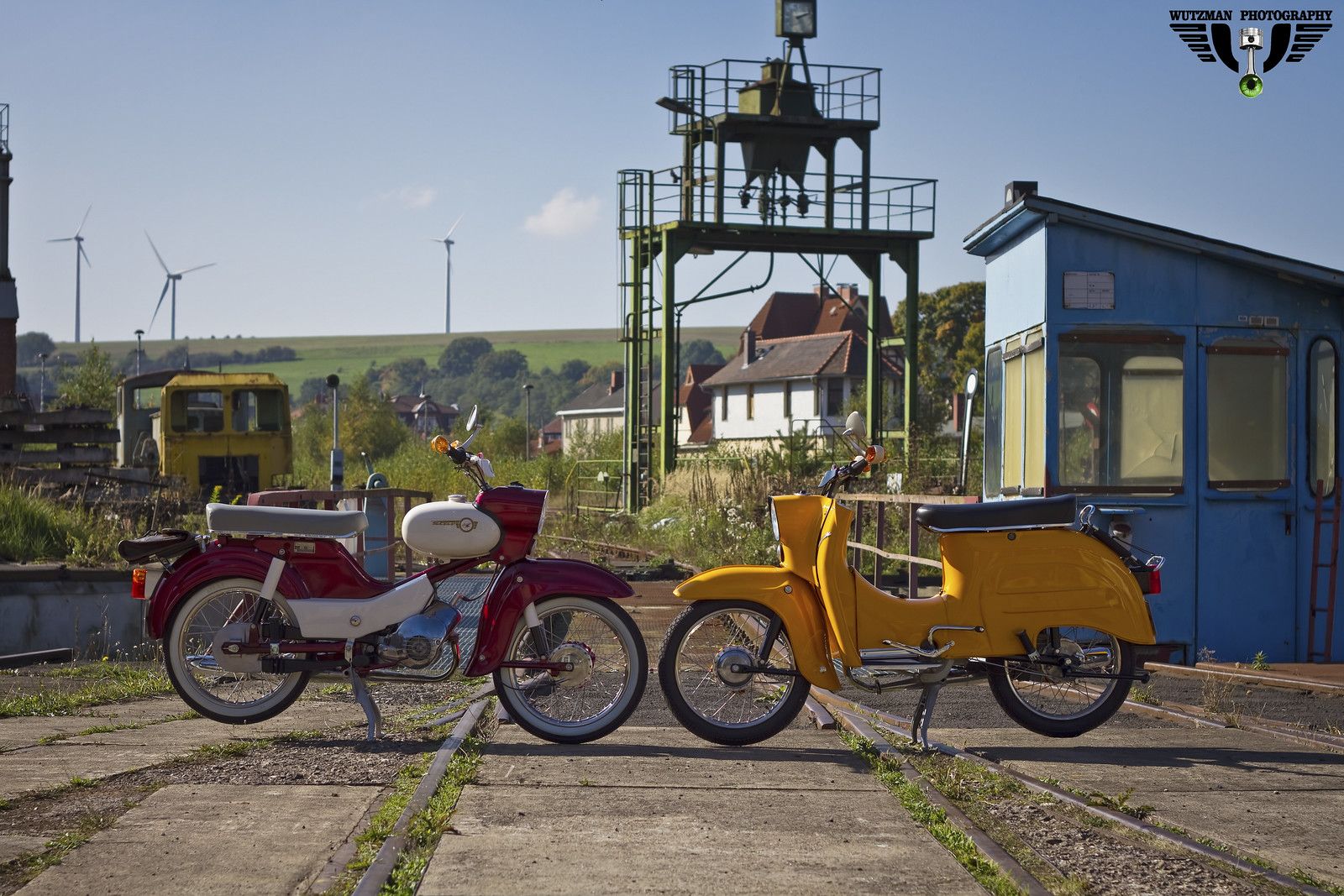




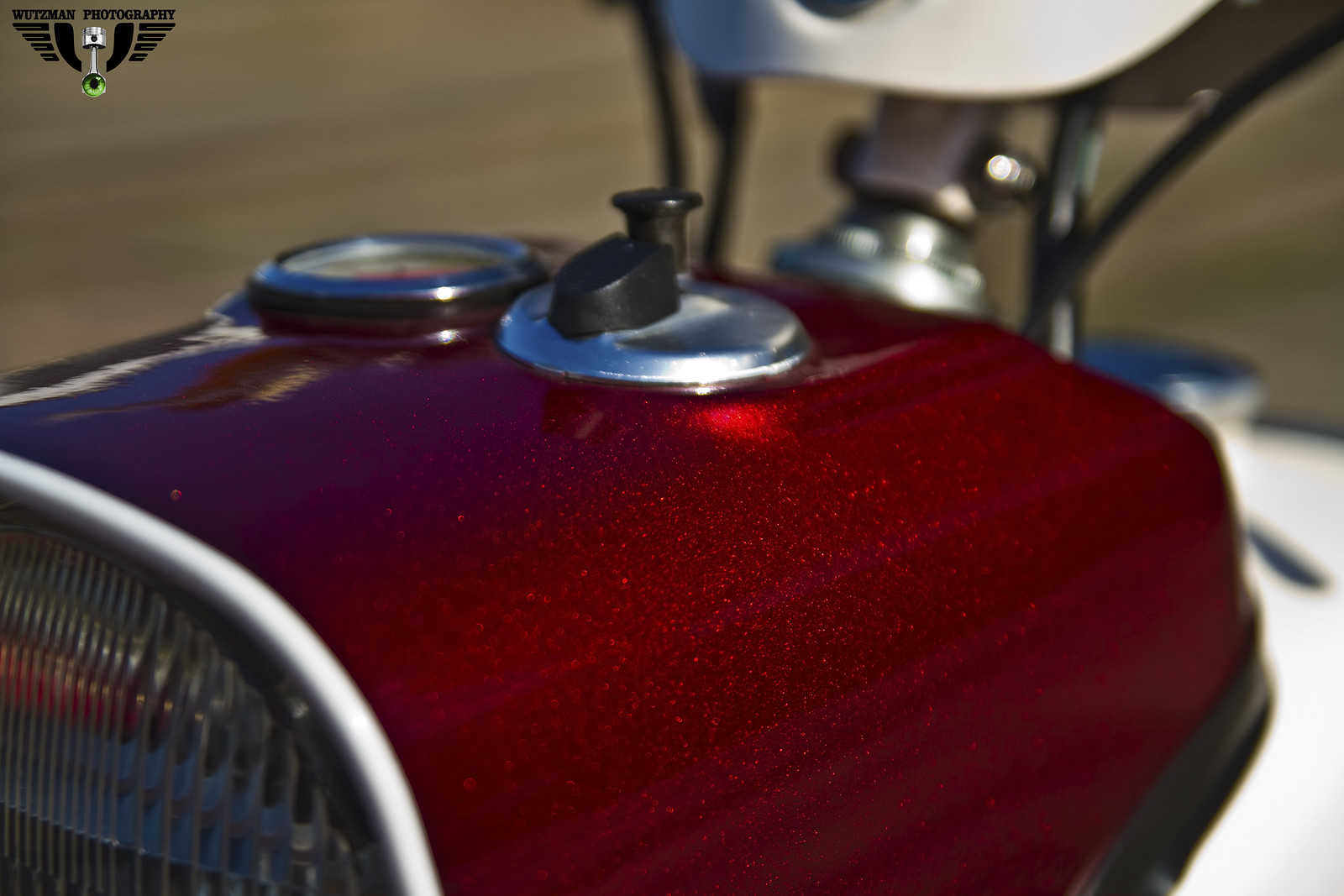
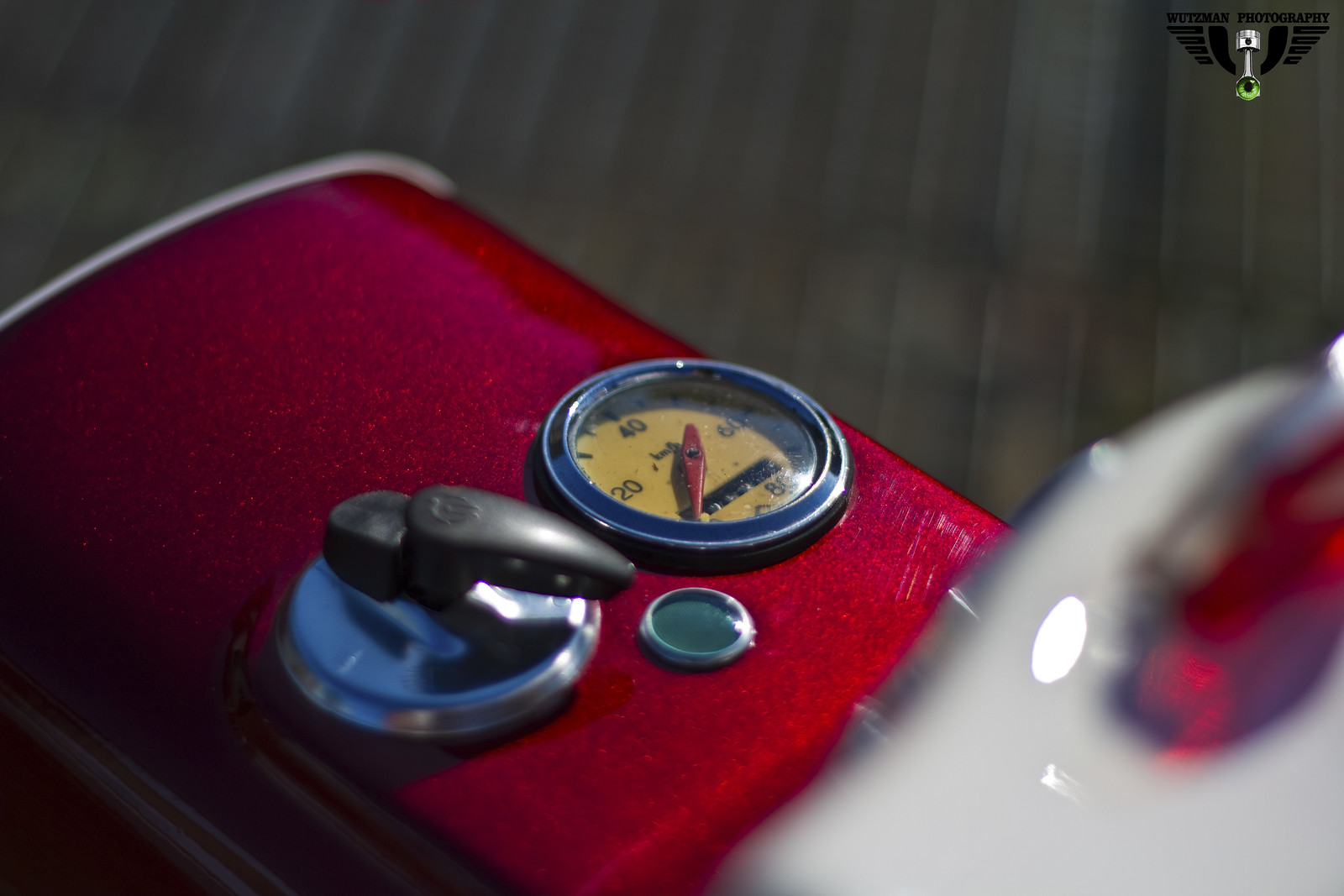







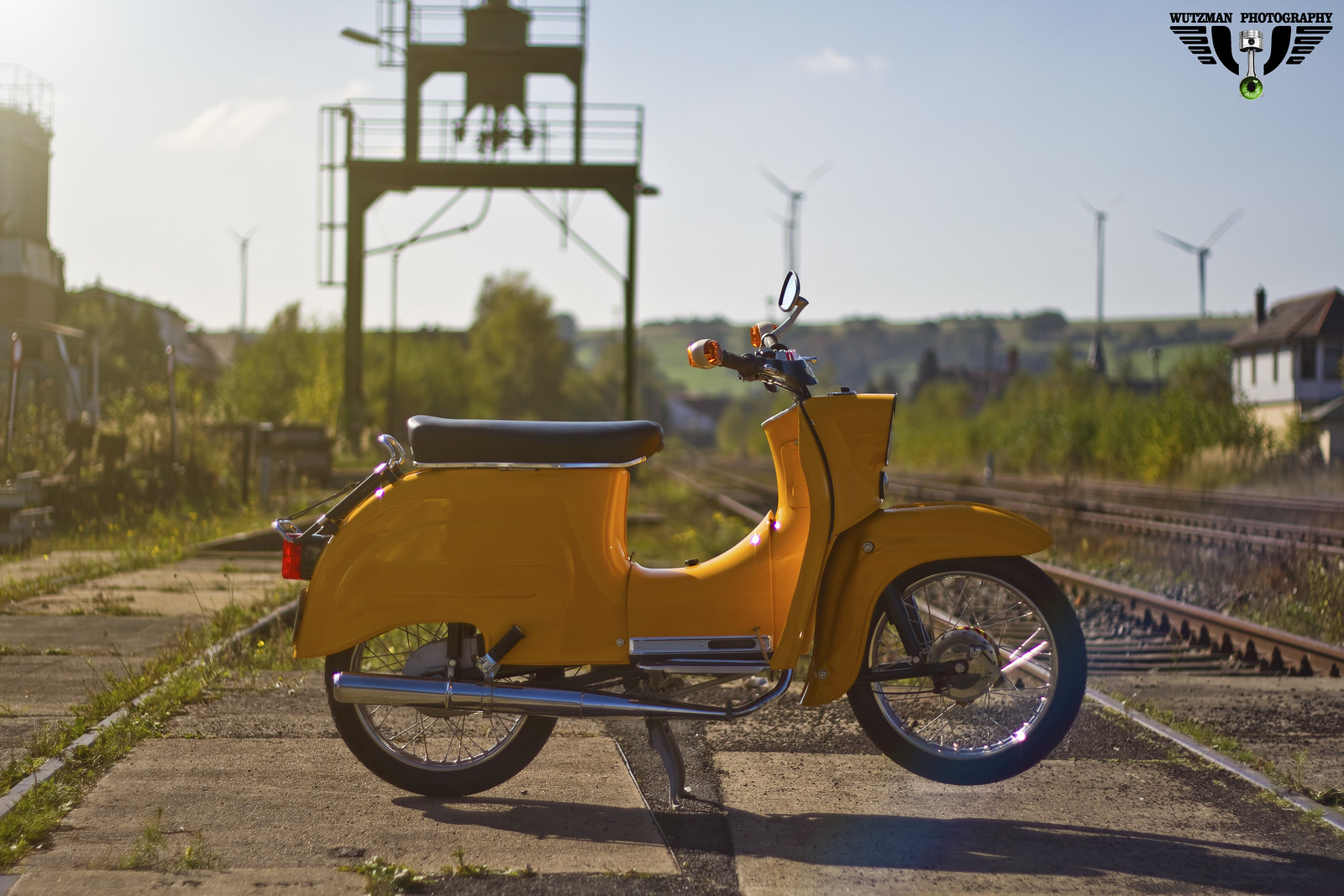

No comments:
Post a Comment